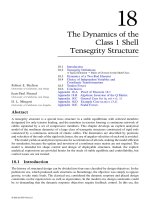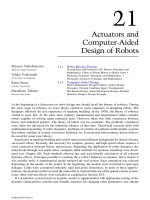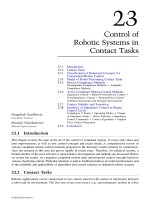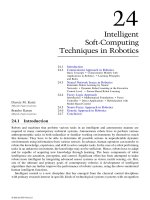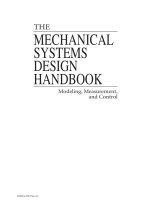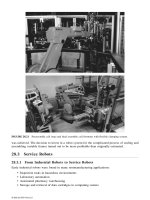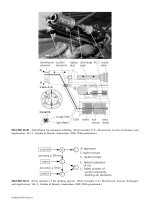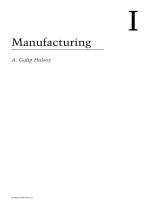- Trang chủ >>
- Khoa Học Tự Nhiên >>
- Vật lý
inventing temperature measurement and scientific progress aug 2004
Bạn đang xem bản rút gọn của tài liệu. Xem và tải ngay bản đầy đủ của tài liệu tại đây (2.64 MB, 305 trang )
Inventing Temperature:
Measurement and
Scientific Progress
Hasok Chang
OXFORD UNIVERSITY PRESS
Inventing Temperature
Oxford Studies in Philosophy of Science
General Editor: Paul Humphreys, University of Virginia
The Book of Evidence
Peter Achinstein
Science, Truth, and Democracy
Philip Kitcher
The Devil in the Details: Asymptotic Reasoning in Explanation,
Reduction, and Emergence
Robert W. Batterman
Science and Partial Truth: A Unitar y Approach to Models
and Scientific Reasoning
Newton C. A. da Costa and Steven French
Inventing Temperature: Measurement and Scientific Progress
Hasok Chang
Inventing Temperature
Measurement and Scientific Progress
Hasok Chang
1
2004
3
Oxford New York
Auckland Bangkok Buenos Aires Cape Town Chennai
Dar es Salaam Delhi Hong Kong Istanbul Karachi Kolkata
Kuala Lumpur Madrid Melbourne Mexico City Mumbai Nairobi
Sa
˜
o Paulo Shanghai Taipei Tokyo Toronto
Copyright # 2004 by Oxford University Press, Inc.
Published by Oxford University Press, Inc.
198 Madison Avenue, New York, New York 10016
www.oup.com
Oxford is a registered trademark of Oxford University Press
All rights reserved. No part of this publication may be reproduced,
stored in a retrieval system, or transmitted, in any form or by any means,
electronic, mechanical, photocopying, recording, or otherwise,
without the prior permission of Oxford University Press.
Library of Congress Cataloging-in-Publication Data
Chang, Hasok.
Inventing temperature : measurement and scientific progress / Hasok Chang.
p. cm.—(Oxford studies in philosophy of science)
Includes bibliographical references and index.
ISBN 0-19-517127-6
1. Temperature measurements— History. 2. Thermometers—History.
3. Interdisciplinary approach to knowledge. 4. Science—Philosophy.
I. Title. II. Series.
QC271.6.C46 2004
536'.5'0287—dc22 2003058489
246897531
Printed in the United States of America
on acid-free paper
To my parents
This page intentionally left blank
Acknowledgments
A
s this is my first book, I need to thank not only those who helped me direct ly
with it but also those who helped me become the scholar and person who
could write such a book.
First and foremost I thank my parents, who raised me not only with the utmost
love and intellectual and material support but also with the basic values that I have
proudly made my own. I would also like to thank them for the faith and patience
with which they supported even those of my life decisions that did not fit their own
visions and hopes of the best possible life for me.
While I was studying abroad, there were many generous people who took care
of me as if they were my own parents, particularly my aunts and uncles Dr. and
Mrs. Young Sik Jang of Plattsburgh, N.Y., and Mr. and Mrs. Chul Hwan Chan g of
Los Angeles. Similarly I thank my mother-in-law, Mrs. Elva Siglar.
My brother and sister have not only been loving siblings but emotional and
intellectual guiding lights throughout my life. They also had the good sense to
marry people just as wonderful as themselves, who have helped me in so many
ways. My loving nieces and nephews are also essential parts of this family without
whom I would be nothing. In the best Korean tradition, my extended family has
also been important, including a remarkable community of intellectual cousins.
The long list of teachers who deserve the most sincere thanks begins with
Mr. Jong-Hwa Lee, my first-grade teacher, who first awakened my love of science. I
also thank all the other teachers I had at Hong-Ik Elementary School in Seoul. I
would like to record the most special thanks to all of my wonderful teachers at
Northfield Mount Hermon School, who taught me to be my own wh ole person as
well as a scholar. To be thanked most directly for their influences on my eventual
intellectual path are Glenn Vandervliet and Hughes Pack. Others that I cannot go
without mentioning include Jim Antal, Fred Taylor, Yvonne Jones, Vaughn Ausman,
Dick and Joy Unsworth, Mary and Bill Compton, Juli and Glenn Dulmage, Bill
Hillenbrand, Meg Donnelly, James Block, and the late Young Il Shin. There is
something I o nce promised to say, and I will say it now in case I never achieve
anything better than this book in my life: ‘‘Northfield Mount Hermon has made all
the difference.’’
As an undergraduate at Caltech, I was very grateful to be nurtured by the
excellent Division of the Humanities and Social Sciences. I would not have become
a scholar in the humanities, or even survived college at all, without the tutelage and
kindness of the humanists, especially Bruce Cain, Robert Rosenstone, Dan Kevles,
Randy Curren, Nicholas Dirks, and Jim Woodward (whom I have the honor of
following in the Oxford Studies series). The SURF program at Caltech was also very
important. My year away at Hampshire College changed my intellectual life so
significantly, and I would like to thank Herbert Bernstein and Jay Garfield parti-
cularly.
I went to Stanford specifically to study with Nancy Cartwright and Peter
Galison, and ever since then they have been so much more than Ph.D. advisors to me.
They have opened so many doors into the intellectual and social world of academia
that I hav e completely lost count by now. What I did not know to expect when I
went to Stanford was that John Dupre
´
would leave such a permanent mark on my
thinking. I would also like to thank many other mentors at Stanford including Tim
Lenoir, Pat Suppes, Marleen Rozemond, and Stuart Hampshire, as well as my fellow
graduate students and the expert administrators who made the Philosophy De-
partment such a perfect place for graduate work.
Gerald Holton, the most gracious sponsor of my postdoctoral fellowship at
Harvard in 1993–94, has taught me more than can be measured during and since
that time. My association with him and Nina Holton has been a true privilege. I also
thank Joan Laws for all her kindness and helpful expertise during my time at
Harvard.
Many other mentors taught and supported me although they never had any
formal obligation to do so. My intellectual life would have been so much poorer had
it not been for their generosity. The kind interest expressed by the late Thomas
Kuhn was a very special source of strength for the young undergraduate struggling
to find his direction. Evelyn Fox Keller showed me how to question science while
loving it. Jed Buchwald helped me enormously in my post-Ph.D. education in the
history of science and gave me confidence that I could do first-rate history. Alan
Chalmers first taught me by his wonderful textbook and later occas ioned the first
articulation of the intellectual direction embodied in this book. Jeremy Butterfield
has helped me at every step of my intellectual and professional development since I
arrived in England a decade ago. Sam Schweber has given me the same gentle and
generous guidance with which he has blessed so many other young scholars. In
similar ways, I also thank Olivier Darrigol, Kostas Gavroglu, Simon Schaffer, Mi-
chael Redhead, Simon Saunders, Nick Maxwell, and Marcello Pera.
To all of my colleagues at the Department of Science and Technology Studies
(formerly History and Philosophy of Science) at University College London, I owe
sincere thanks for a supportive and stimulating interdisciplinary environment. In an
approximate order of seniority within the department, the permanent members are:
Piyo Rattansi, Arthur Miller, Steve Miller, Jon Turney, Brian Balmer, Joe Cain,
Andrew Gregory, and Jane Gregory. I also want to thank our dedica ted adminis-
trators who have put so much of their lives into the depart ment, especially Marina
viii Acknowledgments
Ingham and Beck Hurst. I would also like to thank Alan Lord and Jim Parkin for
their kindness and guidance.
My academic life in London has also been enriched by numerous associations
outside my own department. A great source of support and intellectual stimulation
has been the Centre for the Philosophy of the Natural and Social Sciences at the
London School of Economics. I would like to thank especially my co-organizers of
the measurement project: Nancy Cartwright, Mary Morgan, and Carl Hoefer. This
project also allowed me to work with collaborators and assistants who helped with
various parts of this book. I would also like to thank my colleagues in the London
Centre for the History of Science, Medicine and Technology, who helped me
complete my education as a historian, particularly Joe Cain, Andy Warwick, David
Edgerton, Janet Browne, and Lara Marks.
Many other friends and colleagues helped me nurture this brain-child of mine
as would good aunts and uncles. Among those I would like to note special thanks to
Sang Wook Yi, Nick Rasmussen, Felicia McCarren, Katherine Brading, Amy Slaton,
Brian Balmer, Marcel Boumans, Eleonora Montuschi, and Teresa Numerico.
There are so many other friends who have helped enormously with my general
intellectual development, although they did not have such a direct influence on the
writing of this book. Among those I must especially mention: the late Seung-Joon
Ahn and his wonderful family, Sung Ho Kim, Amy Klatzkin, Deborah and Phil
McKean, Susannah and Paul Nicklin, Wendy Lynch and Bill Bravman, Jordi Cat,
Elizabeth Paris, Dong-Won Kim, Sungook Hong, Alexi Assmus, Mauricio Sua
´
rez,
Betty Smocovitis, David Stump , Jessica Riskin, Sonja Amadae, Myeong Seong Kim,
Ben Harris, Johnson Chung, Conevery Bolton, Celia White, Emily Jernberg, and the
late Sander Thoenes.
I must also give my hearty thanks to all of my students who taught me by
allowing me to teach them, especially those whom I have come to regard as dear
friends and intellectual equals rather than mere former students. Among that large
number are, in the order in which I had the good fortune to meet them and
excluding those who are still studying with me: Graham Lyons, Guy Hussey, Jason
Rucker, Grant Fisher, Andy Hammond, Thomas Dixon, Clint Chaloner, Jesse
Schust, Helen Wickham, Alexis de Greiff, Karl Galle, Marie von Mirbach-Harff, and
Sabina Leonelli. They have helped me maintain my faith that teaching is the ulti-
mate purpose of my career.
Over the years I received gratefully occasional and more than occasional help
on various aspects of this project from numerous other people. I cannot possibly
mention them all, but they include (in alphabetical order): Rachel Ankeny, Theo-
dore Arabatzis, Diana Barkan, Matthias Do
¨
rries, Robert Fox, Allan Franklin, Jan
Golinski, Graeme G ooday, Roger Hahn, Rom Harre
´
, John Heilbron, Larry Holmes,
Keith Hutchison, Frank James, Catherine Kendig, Mi-Gyung Kim, David Knight,
Chris Lawrence, Cynth ia Ma, Michela Massimi, Everett Mendelsohn, Marc-Georges
Nowicki, Anthony O’Hear, John Powers, Stathis Psillos, Paddy Ricard, George Smith,
Barbara Stepansky, Roger Stue wer, George Taylor, Thomas Uebel, Rob Warren,
Friedel Weinert, Jane Wess, Emily Winterburn, and Nick Wyatt.
Various institutions have also been crucial in supporting this work. I could
have not completed the research and writing without a research fellowship from the
Acknowledgments ix
Leverhulme Trust, whom I thank most sincerely. I would like to thank the helpful
librarians, archivists, and curators at many places including the following, as well as
the institutions themselves: the British Library, the London Science Museum and its
Library, University College London, Harvard University, Yale University, the Royal
Society, the University of Cambridge, and the National Maritime Museum.
This book would not have come into being without crucial and timely inter-
ventions from various people. The project originated in the course of my postdoctoral
work with Gerald Holton. Peter Galison initially recommended the manuscript
for the Oxford Studies in the Philosophy of Science. Mary Jo Nye made a crucial
structural suggestion. Three referees for Oxford University Press provided very
helpful comments that reoriented the book substantially and productively, as well
as helped me refine various details. Carl Hoefer and Jeremy Butterfield provided
much-needed last-minute advice. Paul Humphreys, the series editor, encouraged
me along for several years and guided the improvement of the manuscript with
great patience and wisdom. Peter Ohlin and Bob Milks directed the process of
reviewing, manuscript preparation, and production with kind and expert attention.
Lynn Childress copyedited the manuscript with meticulous and principled care.
Finally, I would like to record my deep thanks to Gretchen Siglar for her
steadfast love and genuine interest in my work, with which she saw me through all
the years of labor on this project as well as my life in general.
x Acknowledgments
Contents
Note on Translation xv
Chronology xvii
Introduction 3
1. Keeping the Fixed Points Fixed 8
Narrative: What to Do When Water Refuses to Boil at the
Boiling Point
8
Blood, Butter, and Deep Cellars: The Necessity and Scarcity
of Fixed Points 8
The Vexatious Variations of the Boiling Point 11
Superheating and the Mirage of True Ebullition 17
Escape from Superheating 23
The Understanding of Boiling 28
A Dusty Epilogue 35
Analysis: The Meaning and Achievement of Fixity 39
The Validation of Standards: Justificatory Descent 40
The Iterative Improvement of Standards: Constructive Ascent 44
The Defense of Fixity: Plausible Denial and Serendipitous
Robustness 48
The Case of the Freezing Point 53
2. Spirit, Air, and Quicksilver 57
Narrative: The Search for the ‘‘Real’’ Scale of Temperature 57
The Problem of Nomic Measurement 57
De Luc and the Method of Mixtures 60
Caloric Theories against the Method of Mixtures 64
The Calorist Mirage of Gaseous Linearity 69
Regnault: Austerity and Comparability 74
The Verdict: Air over Mercury 79
Analysis: Measurement and Theory in the Context of Empiricism 84
The Achievement of Observability, by Stages 84
Comparability and the Ontological Principle of Single Value 89
Minimalism against Duhemian Holism 92
Regnault and Post-Laplacian Empiricism 96
3. To Go Beyond 103
Narrative: Measuring Temperature When Thermometers Melt and
Freeze
103
Can Mercury Be Frozen? 104
Can Mercury Tell Us Its Own Freezing Point? 107
Consolidating the Freezing Point of Mercury 113
Adventures of a Scientific Potter 118
It Is Temperature, but Not As We Know It? 123
Ganging Up on Wedgwood 128
Analysis: The Extension of Concepts beyond Their Birth Domains 141
Travel Advisory from Percy Bridgman 142
Beyond Bridgman: Meaning, Definition, and Validity 148
Strategies for Metrological Extension 152
Mutual Grounding as a Growth Strategy 155
4. Theory, Measurement, and Absolute Temperature 159
Narrative: The Quest for the Theoretical Meaning of Temperature 159
Temperature, Heat, and Cold 160
Theoretical Temperature before Thermodynamics 168
William Thomson’s Move to the Abstract 173
Thomson’s Second Absolute Temperature 182
Semi-Concrete Models of the Carnot Cycle 186
Using Gas Thermometers to Approximate Absolute Temperature 192
Analysis: Operationalization—Making Contact between Thinking
and Doing
197
The Hidden Difficulties of Reduction 197
Dealing with Abstractions 202
Operationalization and Its Validity 205
Accuracy through Iteration 212
Theoretical Temperature without Thermodynamics? 217
5. Measurement, Justification, and Scientific Progress 220
Measurement, Circularity, and Coherentism 221
Making Coherentism Progressive: Epistemic Iteration 224
Fruits of Iteration: Enrichment and Self-Correction 228
Tradition, Progress, and Pluralism 231
The Abstract and the Concrete 233
xii Contents
6. Complementary Science—History and Philosophy of Science as
a Continuation of Science by Other Means
235
The Complementary Function of History and Philosophy of
Science 236
Philosophy, History, and Their Interaction in Complementary
Science 238
The Character of Knowledge Generated by Complementary
Science 240
Relations to Other Modes of Historical and Philosophical Study
of Science 247
A Continuation of Science by Other Means 249
Glossary of Scientific, Historical, and Philosophical Terms 251
Bibliography 259
Index 275
Contents xiii
This page intentionally left blank
Note on Translation
Where there are existing English tran slations of non-English texts, I have relied on
them in quotations except as indicated. In other cases, translations are my own.
xv
This page intentionally left blank
Chronology
c. 1600 Galileo, Sanctorio, Drebbel, etc.: first recorded use of thermometers
c. 1690 Eschinardi, Renaldini, etc.: first use of the boiling and melting points
as fixed points of thermometry
1710s Fahrenheit: mercury thermometer
1733 First Russian expedition across Siberia begins, led by Gmelin
c. 1740 Celsius: centigrade thermometer
1751– Diderot et al.: L’Encyclope
´
die
1760 Accession of George III in England.
1764– Black: measurements of latent and specific heats
Watt: improvements on the steam engine
1770s Irvine: theory of heat capacity
1772 De Luc: Recherches sur les modifications de l’atmosphe
`
re
1776 Declaration of American Independence
1777 Report of the Royal Society committee on thermometry
1782–83 Compound nature of water argued; spread of Lavoisier’s ideas
1782 Wedgwood: clay pyrometer
1783 Cavendish/Hutchins: confirmation of the freezing point of mercury
1789 Lavoisier: Traite
´
e
´
le
´
mentaire de chimie
Onset of the French Revolution.
1793 Execution of Louis XVI
Beginning of the ‘‘Terror’’ in France and war with Great Britain
1794 Execution of Lavoisier; death of Robespierre, end of the Terror
Establishment of the E
´
cole Polytechnique in Paris
1798 Laplace: first volume of Traite
´
de me
´
canique ce
´
leste
1799 Rise of Napoleon as First Consul
1800 Rumford: founding of the Royal Institution
Herschel: observation of infrared heating effects
Volta: invention of the ‘‘pile’’ (battery)
Nicholson and Carlisle: electrolysis of water
xvii
1801 Berthollet/Proust: beginning of controversy on chemical proportions
1802 Dalton; Gay-Lussac: works on the thermal expansion of gases
1807 Davy: isolation of potassium and sodium
1808 Dalton: first part of A New System of Chemical Philosophy
1815 Fall of Napoleon
c. 1820 Fresnel: establishment of the wave theory of light
1820 Oersted: discovery of electromagnetic action
1824 Carnot: Re
´
flexions sur la puissance motrice du feu
1827 Death of Laplace
1831 Faraday: discovery of electromagnetic induction
1837 Pouillet: reliable low-temperature measurements down to À808C
1840s Joule, Mayer, Helmholtz, etc.: conservation of energy
1847 Regnault: first extensive set of thermal measurements published
1848 William Thomson (Lord Kelvin): first definition of absolute
temperature
1854 Joule and Thomson: operationalization of Thomson’s second
absolute temperature, by means of the porous-plug experiment
1871 End of Franco-Prussian War; destruction of Regnault’s laboratory
xviii Chronology
Inventing Temperature
This page intentionally left blank
Introduction
T
his book aspires to be a showcase of what I call ‘‘complementary science,’’
which contributes to scientific knowledge through historical and philosophical
investigations. Complementary science asks scientific questions that are excluded
from current specialist science. It begins by re-examining the obvious, by asking
why we accept the basic truths of science that have become educated common
sense. Because many things are protected from questioning and criticism in spe-
cialist science, its demonstrated effectiveness is also unavoidably accompanied by a
degree of dogmatism and a narrowness of focus that can actually result in a loss of
knowledge. History and philosophy of science in its ‘‘complementary’’ mode can
ameliorate this situation, as I hope the following chapters will illustrate in concrete
detail.
Today even the most severe critics of science actually take a lot of scientific
knowledge for granted. Many results of science that we readily believe are in fact
quite extraordinary claims. Take a moment to reflect on how unbelievable the
following propositions would have appeared to a keen and intelligent observer of
nature from 500 years ago. The earth is very old, well over 4 billion years of age; it
exists in a near-vacuum and revolves around the sun, which is about 150 million
kilometers away; in the sun a great deal of energy is produced by nuclear fusion, the
same kind of process as the explosion of a hydrogen bomb; all material objects are
made up of invisible molecules and atoms, which are in turn made up of elementary
particles, all far too small ever to be seen or felt directly; in each cell of a living
creature there is a hypercomplex molecule called DNA, which largely determines
the shape and functioning of the organism; and so on. Most members of today’s
educated public subscribing to the ‘‘Western’’ civilization would assent to most of
these propositions without hesitation, teach them confidently to their children, and
become indignant when some ignorant people que stion these truths. However, if
they were asked to say why they believe these items of scientific common sense,
most would be unable to produce any convincing arguments. It may even be that
the more basic and firm the belief is, the more stumped we tend to feel in trying to
3
justify it. Such a correlation would indicate that unquestioning belief has served as a
substitute for genuine understanding.
Nowhere is this situation more striking than in our scientific knowledge of heat,
which is why it is an appropriate subject matter of this study. Instead of revisiting
debates about the metaphysical nature of heat, which are very well known to his-
torians of science, I will investigate some basic difficulties in an area that is usually
considered much less problematic, and at the same time fundamental to all empirical
studies of heat. That area of study is thermometry, the measurement of temperature.
How do we know that our thermometers tell us the temperature correctly, especially
when they disagree with each other? How can we test whether the fluid in our
thermometer expands regularly with increasing temperature, without a circular re-
liance on the temperature readings provided by the thermometer itself? How did
people without thermometers learn that water boiled or ice melted always at the
same temperature, so that those phenomena could be used as ‘‘fixed points’’ for cal-
ibrating thermometers? In the extremes of hot and cold where all known thermom-
eters broke down materially, how were new standards of temperature established
and verified? And were there any reliable theories to support the thermometric
practices, and if so, how was it possible to test those theories empirically, in the
absence of thermometry that was already well established?
These questions form the topics of the first four chapters of this book, whe re
they will be addressed in full detail, both historically and philosophically. I con-
centrate on developments in the eighteenth and nineteenth centuries, when sci-
entists established the forms of thermometry familiar today in everyday life, basic
experimental science, and standard technological applications. Therefore I will be
discussing quite simple instruments throughout, but simple epistemic questions
about these simple instruments quickly lead us to some extremely complex issues. I
will show how a whole host of eminent past scientists grappled with these issues
and critically examine the solutions they produced.
I aim to show that many simple items of knowledge that we take for granted are
in fact spectacular achievements, obtained only after a great deal of innovative
thinking, painstaking exper iments, bold conjectures, and serious controversies,
which may in fact never have been resolved quite satisfactorily. I will point out deep
philosophical questions and serious technical challenges lurking behind very ele-
mentary results. I will bring back to life the loving labors of the gre at minds who
created and debated these results. I will attempt to communicate my humble ap-
preciation for these achievements, while sweeping away the blind faith in them that
is merely a result of schoolroom and media indoctrination.
It is neither desirable nor any longer effective to try bullying people into
accepting the auth ority of science. Instead, all members of the educated public can
be invited to participate in science, in order to experience the true nature and value
of scientific inquiry. This does not mean listening to professional scientists tell
condescending stories about how they have discovered wonderful things, which
you should believe for reasons that are too difficult for you to understand in real
depth and detail. Doing science ought to mean asking your own questions, making
your own investigations, and drawing your own conclusions for your own reasons.
Of course it will not be feasible to advance the ‘‘cutting edge’’ or ‘‘frontier’’ of
4 Inventing Temperature
modern science without first acquiring years of specialist training. However, the
cutting edge is not all there is to science, nor is it necessarily the most valuable part
of science. Questions that have been answered are still worth asking again, so you
can understand for yourself how to arrive at the standard answers, and possibly
discover new answers or recover forgotten answers that are valuable.
In a way, I am calling for a revival of an old style of science, the kind of ‘‘natural
philosophy’’ that was practiced by the European ‘‘gentlemen’’ of the eighteenth and
nineteenth centuries with such seriousness and delight. But the situation in our
time is indeed different. On the encouraging side, today a much larger number of
women and men can afford to engage in activities that are not strictly necessary for
their immediate survival. On the other hand, science has become so much more
advanced, professionalized, and specialized in the last two centuries that it is no
longer very plausible for the amateurs to interact with the professionals on an equal
footing and contribute in an immediate sense to the advancement of specialist
knowledge.
In this modern circumstance, science for the non-specialist and by the non-
specialist should be historical and philosophical. It is best practiced as ‘‘comple-
mentary science’’ (or the com plemen tary mode of history and philosophy of
science), as I explain in detail in chapter 6. The studies contained in the first four
chapters are presented as illustrations. They are offered as exemplars that may be
followed in pursuing other studies in co mplementary science. I hope that they will
convince you that complementary science can improve our knowledge of nature.
Most of the scientific material presented there is historical, so I am not claiming to
have produced much that is strictly new. However, I believe that the rehabilitation of
discarded or forgotten knowledge does constitute a form of knowledge creation.
Knowing the historical circumstances will also set us free to agree or disagree with
the best judgments reached by the past masters, which form the basis of our modern
consensus.
Each of the first four chapters takes an item of scientific knowledge regarding
temperature that is taken for granted now. Closer study, however, reveals a deep
puzzle that makes it appear that it would actually be quite impossible to obtain and
secure the item of knowledge that seemed so straightforward at first glance. A
historical look reveals an actual scientific controversy that took place, whose vi-
cissitudes are followed in some detail. The conclusion of each episode takes the
form of a judgment regarding the cogency of the answers proposed and debated by
the past scientists, a judgment reached by my own independent reflections—
sometimes in agreement with the verdict of modern sc ience, sometimes not quite.
Each of those chapters consists of two parts. The narrative part states the
philosophical puzzle and gives a problem-centered narrative about the historical
attempts to solve that puzzle. The analysis part contains various in-depth analyses
of certain scientific, historical, and philosophical aspects of the story that would
have distracted the flow of the main narrative given in the first part. The analysis
part of each chapter will tend to contain more philosophical analyses and argu-
ments than the narrative, but I must stress that the division is not meant to be a
separation of history and philosophy. It is not the case that philosophical ideas and
Introduction 5
arguments cannot be embodied in a narrative, and it is also not the case that history
should always be presented in a narrative form.
The last parts of the book are more abstract and methodological. Chapter 5
presents in a more systematic and explicit manner a set of abstract epistemological
ideas that were embedded in the concrete studies in the first four chapters. In that
discussion I identify measurement as a locus where the problems of found ation-
alism are revealed with stark clarity. The alternative I propose is a brand of co-
herentism buttressed by the method of ‘‘epistemic iteration.’’ In epistemic iteration
we start by adopting an existing system of knowledge, with some respect for it but
without any firm assurance that it is correct; on the basis of that initially affirmed
system we launch inquir ies that result in the refinem ent and even correction of the
original system. It is this self-correcting progress that justifies (retrospectively)
successful courses of development in science, not any assurance by reference to
some indubitable foundation. Finally, in chapter 6, I close with a manifesto that
articulates in explicit meth odological terms what it is that I am trying to achieve
with the kind of studies that are included in this book. The notion of com-
plementary science, which I have sketched only very briefly for now, will be de-
veloped more fully and systematically there.
As this book incorporates diverse elements, it could be read selectively. The
main themes can be gathered by reading the narrative parts of the first four
chapters; in that case, various sections in the analysis parts of those chapters can be
sampled according to your particular interests. If you have little patience for his-
torical details, it may work to read just the analysis parts of chapters 1 to 4 (skipping
the obviously historical sections), then chapter 5. If you are simply too busy and
also prefer to take philosophy in the more abstract vein, then chapter 5 could be
read by itself; however, the arguments there will be much less vivid and convincing
unless you have seen at least some of the details in earlier chapters. Chapter 6 is
intended mainly for professional scholars and advanced students in the history and
philosophy of science. However, for anyone particularly excited, puzzled, or dis-
turbed by the work contained in the first five chapters, it will be helpful to read
chapter 6 to get my own explana tion of what I am trying to do. In general, the
chapters could be read independently of each other and in any order. However,
they are arranged in roughly chronological order and both the historical and the
philosophical discussions contained in them do accumulate in a real sense, so if you
have the time and intention to read all of the chapters, you would do well to read
them in the order presented.
As indicated by its inclusion in the Oxford Studies in the Philosophy of Science, this
book is intended to be a work of philosophy. However, the studies presented here
are works of philosophy, science, and history simultaneously. I am aware that they
may cross some boundaries and offend the sensibilities of particular academic
disciplines. And if I go into explanations of various elementary points well known
to specialists, that is not a sign of condescension or ignorance, but only an al-
lowance for the variety of intended readership. I fear that professional philosophy
today is at risk of becoming an ailing academic discipline shunned by large numbers
of students and seemingly out of touch with other human concerns. It should not
6 Inventing Temperature
